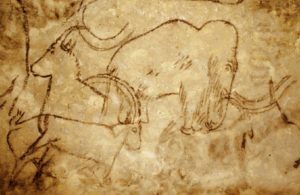
AMERICAN ASSOCIATION FOR THE ADVANCEMENT OF SCIENCE—The dispersal of humans out of Africa coincided with a dramatic global reduction in the size of mammals, a new study* reveals. This “downsizing” trend may continue, suggest the authors, to the extent that, in just a couple hundred years, the largest terrestrial mammal left may be the domestic cow, weighing in at 900 kilograms (kg). Felisa A. Smith et al. sought to understand how the size of mammals has changed over time. They updated and created two datasets that capture the global distribution and body size of terrestrial mammals that lived between 66 million years ago through the present. The authors found a substantial bias in mammal extinction during the periods when humans were dispersing around the globe, whereby species that went extinct tended to be two to three times bigger than mammals that survived, a trend that was evident globally. Notably, prior to humans’ migration out of Africa 125,000 years ago, Africa was home to mammals of smaller size (with a mean body mass roughly half that of mammals found in Eurasia), which the authors suggest is reflective of the hominin-mammal interactions that had already been at play. Perhaps most striking is the reduction of mammals in the New World during the late Pleistocene, which coincided with humans’ adoption of long-range weapons. The authors report a greater than 10-fold drop in both mean and maximum body mass of mammals during this time; for example, mean mass of terrestrial mammals in North America fell from 98.0 to 7.6 kg. If current trends continue, the mean body mass of mammals in North America will drop from 7.7 to 4.9 kg in a few hundred years, the authors say. As mammals play a critical role in shaping ecosystems, the downsizing trend will have a cascading impact on other organisms.
Article Source: AAAS news release
*”Body size downgrading of mammals over the late Quaternary,” by F.A. Smith at University of New Mexico in Albuquerque, NM; R.E. Elliott Smith at University of California, San Diego in San Diego, CA; S.K. Lyons at University of Nebraska-Lincoln in Lincoln, NE; J.L. Payne at Stanford University in Stanford, CA.
_______________________________




